I have an identical question to this one , but since I'm new to programming and only really know swift I was wondering if someone could give me its equivalent in swift. Or point me to another question that I may have missed that is in swift.
Thanks!
UPDATE: here's the basic jist of my view controller after I've cut some of the fat away to deal with only the relevant topic. To restate the problem. Not until I have clicked my 'doneButton' to run the createClient() function and navigate back to the client page to edit the freshly created client will the the tap gesture work to dismiss the keyboard.
import UIKit
import CoreData
import Foundation
class NewClientTableViewController: UITableViewController, UINavigationControllerDelegate, UITextFieldDelegate {
let managedObjectContext = (UIApplication.sharedApplication().delegate as AppDelegate).managedObjectContext
@IBOutlet weak var nameTxt: UITextField!
@IBOutlet weak var ageTxt: UITextField!
@IBOutlet weak var phoneTxt: UITextField!
@IBOutlet weak var emailTxt: UITextField!
@IBOutlet weak var heightTxt: UITextField!
@IBOutlet weak var notesTxt: UITextView!
var client: Client? = nil
override func viewDidLoad() {
super.viewDidLoad()
if client != nil {
nameTxt.text = client?.name
ageTxt.text = client?.age
heightTxt.text = client?.height
phoneTxt.text = client?.phone
emailTxt.text = client?.email
notesTxt.text = client?.notes
self.title = client?.name
phoneTxt.delegate = self
let tapGesture = UITapGestureRecognizer(target: self, action: Selector("hideKeyboard"))
tapGesture.cancelsTouchesInView = true
tableView.addGestureRecognizer(tapGesture)
}
}
func hideKeyboard() {
tableView.endEditing(true)
}
override func didReceiveMemoryWarning() {
super.didReceiveMemoryWarning()
// Dispose of any resources that can be recreated.
}
@IBAction func doneButton(sender: AnyObject) {
if client != nil {
editClient()
} else {
createClient()
}
dismissViewController()
}
func editClient() {
client?.name = nameTxt.text
client?.age = ageTxt.text
client?.height = heightTxt.text
client?.phone = phoneTxt.text
client?.email = emailTxt.text
client?.notes = notesTxt.text
client?.clientImage = UIImageJPEGRepresentation(contactImage.image, 1)
managedObjectContext?.save(nil)
}
func createClient() {
let entityDescription = NSEntityDescription.entityForName("Client", inManagedObjectContext: managedObjectContext!)
let client = Client(entity: entityDescription!, insertIntoManagedObjectContext: managedObjectContext)
if nameTxt.text == "" {
client.name = "Untitled Client"
} else {
client.name = nameTxt.text
}
client.age = ageTxt.text
client.height = heightTxt.text
client.phone = phoneTxt.text
client.email = emailTxt.text
client.notes = notesTxt.text
client.clientImage = UIImageJPEGRepresentation(contactImage.image, 1)
managedObjectContext?.save(nil)
}
func dismissViewController() {
navigationController?.popToRootViewControllerAnimated(true)
}
}
